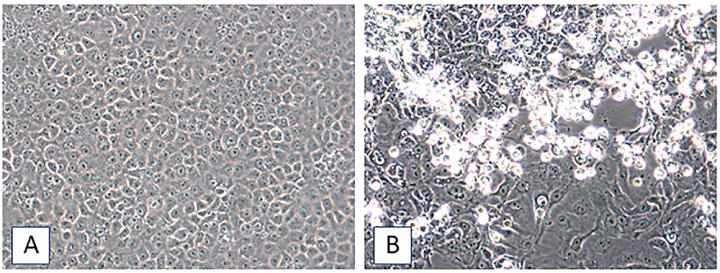A PLOS Neglected Tropical Diseases press release

Credit: Morris, et al. (2019)
Madariaga virus (MADV), or South American eastern equine encephalitis virus (EEEV), has–until now– been found primarily in animals of South and Central America, with the first human outbreak occurring in Panama in 2010. Now, scientists writing in PLOS Neglected Tropical Diseases report the identification of MADV in eight children in Haiti in 2015 and 2016.
Madariaga is a mosquito-borne disease transmitted to humans from animals including horses, mice, rats and bats. Little is known about its epidemiology or life cycle. While MADV can cause serious encephalitis, surveys in Panama after the 2010 outbreak found that between 2 to 5 percent of the population in the areas affected by MADV had evidence of prior infection, suggesting that mild or asymptomatic infections are common.
Glenn Morris of the University of Florida and colleagues maintain a surveillance program at a school clinic in Haiti and, since 2014, have collected blood samples of children presenting to the clinic with acute febrile illness. In April 2015, one such sample–collected from an 8-year-old girl in the Gressier/Leogane region of Haiti–tested positive for MADV. The virus was then cultured from an additional seven patients from the same cohort throughout 2016.
Symptoms from the patients most closely resembled those seen in dengue fever infection, and no patients had encephalitis. All the strains isolated were very similar, and using available information on the genetic sequence of the MADV cultured from the patients, the team was able to hypothesize that the virus was introduced to Haiti from Panama sometime between October 2012 and January 2015.
“Our data indicate that this virus, which has the potential for causing serious illness, has recently been introduced into Haiti, and raises the possibility that it might move into other parts of the Caribbean or North America,” the researchers say.
###
Peer-reviewed / Observational Study / People
In your coverage please use this URL to provide access to the freely available paper: http://journals.
Citation: Lednicky JA, White SK, Mavian CN, El Badry MA, Telisma T, et al. (2019) Emergence of Madariaga virus as a cause of acute febrile illness in children, Haiti, 2015-2016. PLOS Neglected Tropical Diseases 13(1): e0006972. https:/
Funding: Work was supported in part by NIH grant R01 AI126357-01S1, awarded to Dr. Morris. The funders had no role in study design, data collection and analysis, decision to publish, or preparation of the manuscript.
Competing Interests: The authors declare that no competing interests exist.
Media Contact
Avren Keating
[email protected]
Related Journal Article
http://dx.




